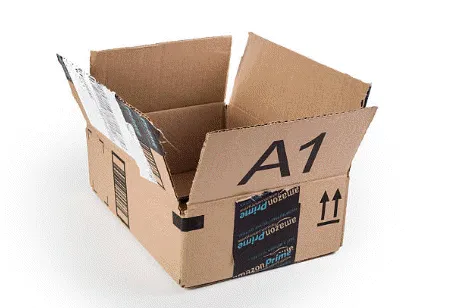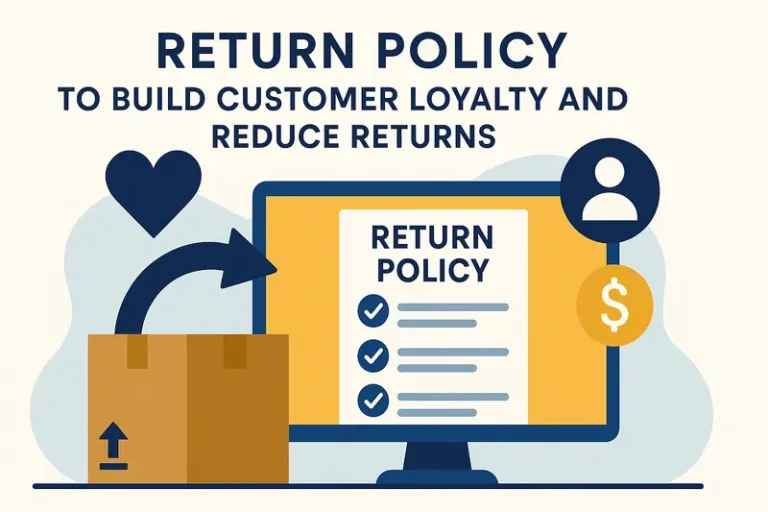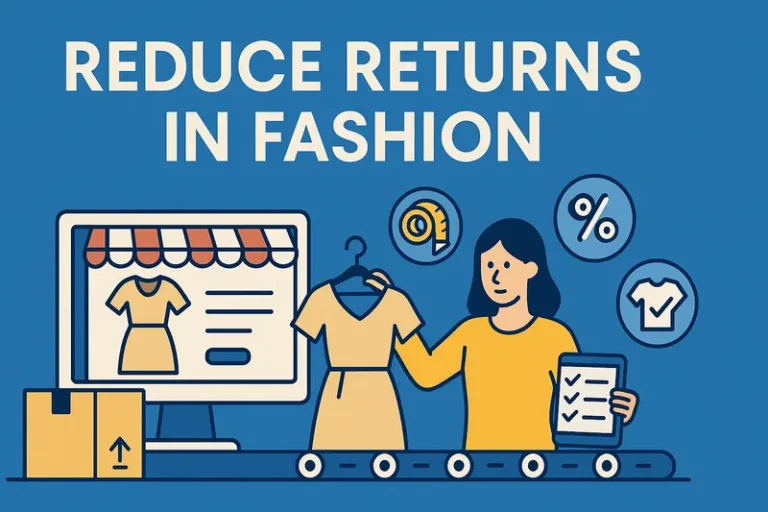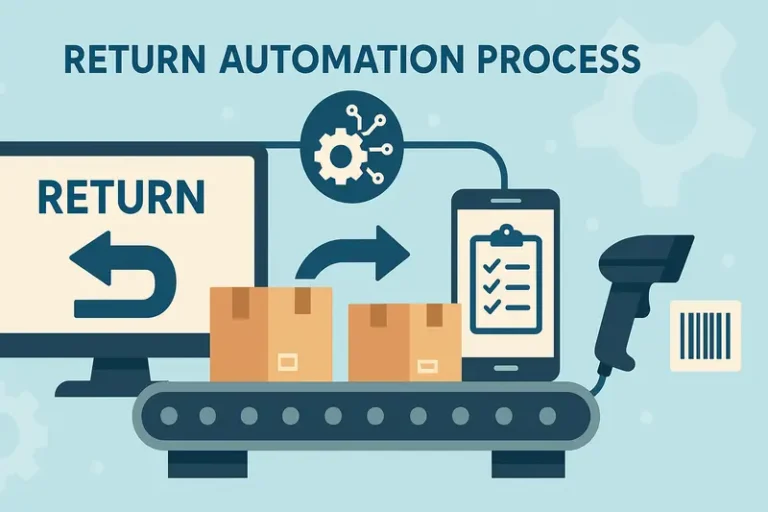Are Free Customer Returns Coming to An End?
The era of free ecommerce returns is undergoing increasing scrutiny as many retailers reassess and adjust their return policies as they face mounting financial pressures, environmental concerns, and changing consumer behaviors. Once a hallmark of customer convenience, free and unlimited returns became the cornerstone upon which customer trust and loyalty was earned and purchases derisked. Now, these retailers are part of a growing trend where about 40% of retailers are now charging return fees, up from 31% in 2022, according to Narvar research. This shift could redefine the industry, marking a pivotal moment in the relationship between online shoppers and retailers.
The Financial Burden of Returns
Returns have become one of the most challenging financial burdens in e-commerce. Projections for 2024 suggest U.S. retailers will endure losses exceeding $100 billion annually due to returns, contributing to an estimated $890 billion global economic impact. Processing returns often incurs costs surpassing 30% of the product’s original price, encompassing transportation, restocking, and operational expenses. Seasonal and rapidly obsolescent items, as well as items damaged in transit, further exacerbate these losses and erode profitability, compounding the financial strain.
The rapid growth of ecommerce through the pandemic has intensified this issue, but now that the online shopping rate is returning to the mean, the returns rate hasn’t followed suit. Categories such as apparel and electronics are particularly affected where sizing issues and unmet expectations drive higher returns.
The Environmental Impact
Beyond financial implications, the environmental impact of returns is staggering. In the United States alone, returned goods generate an estimated 9.5 billion pounds of landfill waste annually and contribute 24 million metric tons of carbon dioxide emissions. Many returned items cannot be resold as new, often ending up in liquidation channels or being discarded entirely. This unsustainable cycle is prompting retailers to factor eco-friendly considerations into their return strategies.
Slash Your Fulfillment Costs by Up to 30%
Cut shipping expenses by 30% and boost profit with Cahoot's AI-optimized fulfillment services and modern tech —no overheads and no humans required!
I'm Interested in Saving Time and MoneyEvolving Returns Policies
To mitigate these challenges, retailers are tightening return policies. Strategies include shorter return windows, fees for mail-in returns, and restocking charges. Leading brands like American Eagle, DSW, and H&M are at the forefront of these changes, signaling a departure from lenient practices of the past (see a larger list of retailers charging e-commerce return fees in December 2025, which is by no means exhaustive, at the bottom of this article). Even Amazon started charging $1 for certain return types.
Some retailers are also exploring innovative solutions to mitigate return rates. Technologies like augmented reality (AR) and virtual try-on tools aim to improve purchasing accuracy, reducing the likelihood of returns. Enhanced product descriptions, interactive sizing guides, and AI-driven recommendations are further helping customers make more informed choices.
Another emerging trend is the adoption of “returnless refunds,” where customers are allowed to keep items that are not economically viable to process as returns. While this reduces logistical costs, it raises questions about waste and sustainability, as well as abuse by bad actors, highlighting the need for balanced approaches. But there are very real instances where the “Keep It” approach makes sense. Low-cost/low-margin items, for example. Or, when there are sanitary concerns and items cannot be resold; such as food, undergarments, and pillows.
Avoid Policies That Are Too Strict
Many online stores are simultaneously making their return rules stricter to stave off returns fraud. They might ask for proof of purchase, shorten the return window, or create tough return conditions. While this sounds like a good way to prevent financial losses, it often backfires.
Customers really care about how easy it is to return things. If a store makes returns too difficult, many shoppers will simply stop buying from that store. These practices may be intended to deter wardrobing and bracketing that lead to returns without question, but they frequently alienate customers by failing to account for shopping histories and past loyalty. Plus, people get frustrated when returns are complicated, take too long, or seem unfair. Even customers who used to love a brand might walk away if they have a bad return experience. And inconsistent policy enforcement undermines trust and deters repeat purchases, even among previously loyal customers.
The good news is that stores can protect themselves from fraud without pushing customers away. The best approach is to use smart technology to understand different types of customers, monitor patterns, etc. Some shoppers return items more often than others, but that doesn’t mean they’re trying to cheat the system. By creating flexible return policies that treat loyal customers well, stores can actually make more money in the long run. The key is finding a middle ground. When stores get this right, customers feel valued and are more likely to maintain brand affinity.
Aligning Customer Expectations and Merchant Realities
While consumers remain attached to the convenience of free returns, their expectations are gradually adapting to new retail realities. Surveys reveal that flexibility and transparency are more valued than free returns. Clear communication about return policies, quick refund processing, and multiple return options are becoming critical components of the post-purchase experience, and ultimately, customer satisfaction. And when return fees are employed, the key is to make them reasonable; perhaps introduce them slowly and increase them over a long period of time.
Retailers are also leveraging behavioral insights to enhance return strategies. The “refund effect”, where customers receiving swift refunds are more likely to make additional purchases, is a key consideration. By optimizing refund processes such as offering incentives for exchanges, or offering gift cards that have a slightly higher value than the original purchase to keep the item, rather than return it, retailers can retain customer loyalty while mitigating costs.
Looking for a New 3PL? Start with this Free RFP Template
Cut weeks off your selection process. Avoid pitfalls. Get the only 3PL RFP checklist built for ecommerce brands, absolutely free.
Get My Free 3PL RFPA Balanced Approach
The future of ecommerce returns lies in finding equilibrium between consumer convenience and economic sustainability. Retailers are expected to continue refining policies, potentially introducing tiered return structures where loyal customers or higher-value purchases receive more lenient terms. Technologies that predict return likelihood based on purchase history or provide real-time feedback during the buying process may further reduce return rates.
Environmental sustainability will also play a more prominent role in shaping returns strategies. Partnerships with recommerce platforms, investments in circular economy initiatives, and improvements in reverse logistics can help align business objectives with environmental responsibility.
A Sustainable Path Forward
The e-commerce return ecosystem is not collapsing but evolving toward greater efficiency and balance. Retailers are navigating a delicate path, aiming to uphold customer satisfaction while safeguarding profitability and addressing ecological concerns. The era of unrestricted, free returns is giving way to a more nuanced model that prioritizes thoughtful consumption and sustainable practices.
As this transformation unfolds, the key to success will lie in innovation, transparency, and adaptability. By embracing these principles, retailers can forge stronger connections with consumers while fostering a more sustainable and economically viable future for e-commerce.
Table 1. Returns Fees Charged by Well-Known Retailers in December 2024.
| Retailer/Brand | Returns Fee |
| Abercrombie & Fitch | All customers: $7.00 |
| American Eagle Outfitters | All customers: $5:00: (excluding specific categories) |
| boohoo | All customers: $6:00 |
| Dillard’s | All customers: $9.95 |
| DSW | Non-Members: $8.50; Gold or Elite members: Free |
| H&M | Non-Members: $5.99; H&M Members: $2.99 |
| JCPenney | All customers: $8.00 |
| J.Crew | All customers: $7.50 |
| Kohl’s | All customers: Kohl’s does not pay return shipping costs |
| Macy’s | Non-Members: $9.99; Star Reward Members: Free |
| Oh Polly | All customers: From $2.99 for store credit to $9.99 |
| PrettyLittleThing | All customers: $7.00 |
| REI Co-op | All customers: $7.99 |
| Saks Fifth Avenue | All customers: $9.95 |
| T.J. Maxx | All customers: $11.99 |
| Urban Outfitters | All customers: $5 |
| Zara | All customers: $4.95 |

Turn Returns Into New Revenue
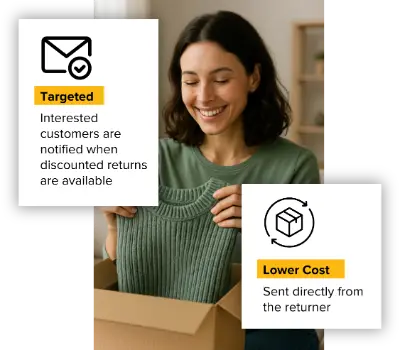
Related Blog Posts
Amazon FBA Grade and Resell: Program Benefits and Pitfalls
In this article
 10 minutes
10 minutes
- Online Returns are Really Expensive
- Amazon FBA Grade and Resell Program
- How the FBA Grade and Resell Program Works
- Building a Sustainable Business Model
- Managing and Monitoring Used Inventory
- Marketing and Promoting Your Products
- FBA Grade and Resell Program Fees
- Benefits of the FBA Grade and Resell Program
- Pitfalls of FBA Grade and Resell Program
- Conclusion
- Frequently Asked Questions
Ecommerce returns are painful for Sellers no matter which way you slice it. They drain attention and resources and directly impact the bottom line regardless if returns fraud is involved, or not. Many estimate that 20 – 30% of ecommerce orders are returned for one reason or another.
Online Returns are Really Expensive
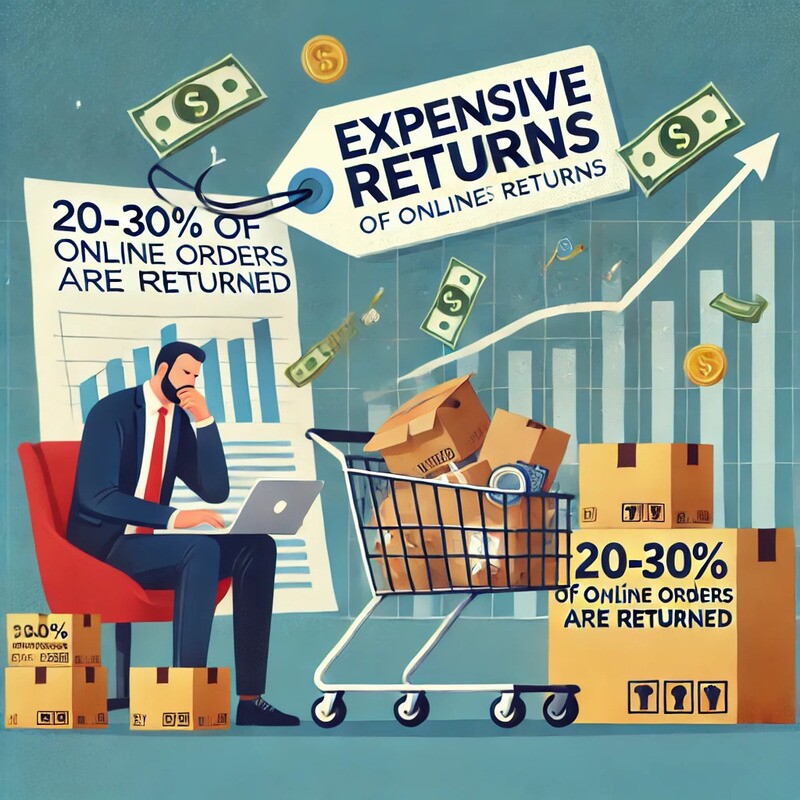
For each returned item, Amazon Third Party Sellers have already absorbed the product cost and the cost of preparing and shipping the inventory from their 3PL provider to multiple FBA fulfillment centers. Then, after an order is received, there are referral fees, fulfillment fees, and storage fees. What’s left after all the other sunk costs is the profit margin. If a customer initiates a free (or significantly subsidized) return, the Seller is expected to eat the costs of the return shipping, product inspection, and subsequent inventory management, which hurts the profit margin or may even turn the sale into a loss.
It’s no wonder many Sellers just offer to let customers keep low-cost items rather than return them because, at a certain point, it doesn’t make sense to process the return and resell it. Without careful cost management, Sellers can easily lose money on these transactions. To help Sellers recoup some value from returns and to get an even larger share of the Third-Party Sellers’ wallet, Amazon has now opened up the FBA Grade and Resell program to all Sellers that use FBA in the US.
Amazon FBA Grade and Resell Program
In the US and Europe, nearly 368MM items were either resold on Amazon in Used Condition or otherwise liquidated or donated last year. However, the FBA Grade and Resell program that enabled this success story was only available to a few Brands. Amazon has now made the program available to all Sellers that use FBA in the US, enabling all Sellers to recover value from inventory that would otherwise be removed or discarded by automatically inspecting, grading, and relisting eligible returned products as “Used” on Amazon’s marketplace. The program is particularly beneficial for items that can no longer be sold in New Condition but retain significant market value.
Not all products are eligible for FBA Grade and Resell. Specific categories are excluded, including but not limited to consumables, dangerous goods (hazmat) and recalled products, gift cards, heavy/bulky SKUs, and products with an average sale price that exceeds $75 (the complete list can be found here). Additionally, items must be returned to ecommerce fulfillment centers that support the program, and Sellers can exclude specific ASINs from the program for any reason.
How the FBA Grade and Resell Program Works
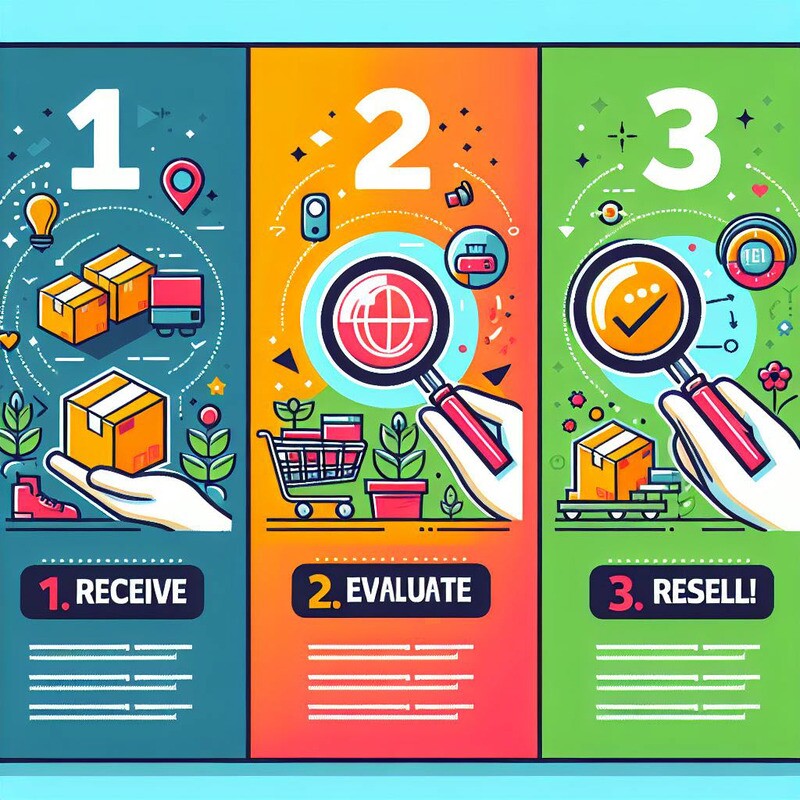
Sellers first enroll in the Grade and Sell program through the Automated Unfulfillable Settings in Seller Central. Once enrolled, eligible customer returns that are unsellable as New are processed through different evaluation paths based on the product type. These paths include non-technical, technical, and specialty grading.
Amazon’s grading process is described as thorough and tailored to each product category. It may include checking for catalog accuracy, inspecting for packaging defects, damage, or cosmetic blemishes, validating functionality, checking accessories, and even memory wiping and factory resetting certain electronics such as laptops and cameras.
After evaluation, items are assigned one of four conditions: Used-Like New, Used-Very Good, Used-Good, or Used-Acceptable. Items that don’t meet these standards are graded as Unsellable. For items graded as Used, Amazon creates a new listing under the parent ASIN in the “New and Used” offers section, with the Seller remaining as Seller of record. They are eligible to become the Used Featured Offer (the default buy box for Used items) if the Seller’s offer meets the pricing and performance criteria and is managed the same way New items are managed, including advertising and pricing. The grading process can take several weeks and longer during peak seasons, so plan accordingly.
Sellers manage the pricing discount that applies to all Used SKUs in the program as a percentage of the New Condition offer price. For example, a Seller might set offers for Used-Like New SKUs as “85%” of the New SKU offer price, which is applied automatically when units are relisted. Sellers should actively manage their pricing strategy to ensure their Used items remain competitive while providing a worthwhile return.
Slash Your Fulfillment Costs by Up to 30%
Cut shipping expenses by 30% and boost profit with Cahoot's AI-optimized fulfillment services and modern tech —no overheads and no humans required!
I'm Interested in Saving Time and MoneyBuilding a Sustainable Business Model
Building a sustainable business model is crucial for long-term success in the Amazon reselling business. A sustainable business model balances profitability, customer satisfaction, and environmental responsibility. Here are some tips to help you create a sustainable business model:
- Focus on High-Demand, Low-Impact Products: Prioritize selling products that are in high demand and have a low environmental impact. This approach not only ensures steady sales but also minimizes your ecological footprint.
- Eco-Friendly Packaging: Use eco-friendly packaging materials, such as recycled or biodegradable options. This not only appeals to environmentally conscious customers but also reduces waste.
- Recycling Programs: Implement a recycling program for returned or damaged products. This can help reduce waste and potentially recover some value from unsellable items.
- Utilize FBA Services: Consider using Amazon’s Fulfillment by Amazon (FBA) service. FBA can help reduce carbon emissions by optimizing shipping and logistics, and it also improves customer satisfaction with faster delivery times.
- Optimize Business Operations: Continuously monitor and optimize your business operations to reduce waste and improve efficiency. This can include streamlining your supply chain, reducing energy consumption, and minimizing unnecessary expenses.
By incorporating these practices, you can build a sustainable business model that not only benefits the environment but also enhances your brand’s reputation and profitability.
Managing and Monitoring Used Inventory
Sellers have several tools available to help manage Used (graded) inventory. The most important is the Grade and Resell Report, which provides real-time updates on inventory status, including how many units are graded and ready for resale.
Sellers will appreciate that customer feedback and reviews for graded items roll up to the parent ASIN and do not materially affect Account Health Metrics, ensuring that Seller’s reputation is not negatively compromised due to poorly graded units.
Marketing and Promoting Your Products
Marketing and promotion of your products boosts visibility, attracting customers and driving sales. Here are some effective strategies to boost your product visibility and sales:
- Amazon Advertising: Utilize Amazon’s advertising options, such as Sponsored Products and Sponsored Brands, to increase visibility and drive sales. These tools can help your products stand out in a crowded marketplace.
- Optimize Product Listings: Ensure your product listings are optimized with high-quality images, detailed descriptions, and relevant keywords. This improves your chances of appearing in search results and attracting potential buyers.
- Social Media Promotion: Leverage social media platforms like Facebook and Instagram to promote your products and engage with customers. Social media can be a powerful tool for building brand awareness and driving traffic to your listings.
- Discounts and Promotions: Consider offering discounts or promotions to attract customers and drive sales. Limited-time offers and special deals can create a sense of urgency and encourage purchases.
- Continuous Optimization: Continuously monitor and optimize your marketing strategy to improve results. Analyze your advertising performance, adjust your campaigns, and experiment with different promotional tactics to find what works best.
By implementing these marketing strategies, you can effectively promote your products, attract more customers, and increase your sales on Amazon.
Looking for a New 3PL? Start with this Free RFP Template
Cut weeks off your selection process. Avoid pitfalls. Get the only 3PL RFP checklist built for ecommerce brands, absolutely free.
Get My Free 3PL RFPFBA Grade and Resell Program Fees
Based on the item’s size and weight, sellers are charged a flat processing fee (from $1.50 – $4.10). However, items deemed completely unsellable remain in the Seller’s unfulfillable inventory and are not relisted nor processing fees charged. Sellers receive payouts for sold Used units just as they would for their New items, minus applicable fees. Amazon recommends enrolling SKUs with an average selling price above $15 to ensure profitability. Still, this guidance is highly subjective, and each Seller must monitor their eligible SKUs and adjust as necessary.
Benefits of the FBA Grade and Resell Program
There are several benefits of the FBA Grade and Resell program:
- Boost revenue: Recover value from inventory that would otherwise be a loss instead of removing/disposing returned items or selling them at a steep discount through liquidation channels by selling Used units to customers willing to accept them at a discount.
- Ease of Use: Sellers can automate submitting unfulfillable inventory into the Grade and Resell program, reducing the time and effort required to manage returned stock. Set it and forget it.
- Cost Efficiency: Sellers only pay a processing fee when an item is successfully relisted and can avoid paying to return or dispose of unsellable inventory.
- Faster time to market for Used: Units delivered directly to FBA fulfillment centers that support Grade and Resell compared to removing inventory, grading and prepping it externally, and then either Seller-fulfilling Used SKUs, or reinbounding to FBA
- Support sustainability: Reduce waste going to the landfill
Pitfalls of FBA Grade and Resell Program
- Imperfect humans resulting in poorly graded units: FBA employees may need to be more familiar with a product and what constitutes success criteria for passing inspection beyond the vague definitions provided in the condition guidelines. The subjective nature of the grading rubric would make it too easy to overestimate the grade as Like New when it’s actually in Acceptable condition, leading to customer complaints and poor reviews and/or brand image. And vice versa, under-grading an item limits the net recovery value from the resold item, leading to potential losses rather than gains.
- It’s expensive: For example, if a $30 home goods item is resold at 75% of the new price, ($22.50) after the Grade and Resell Processing fee ($1.80), Fulfillment fee ($6.75), and Referral fee ($3.38), the net recovered value is only $10.57, or 35.23% of the original offer price for the new condition listing. That’s less than the cost of the Fulfillment and Referral fees for the original sale of the new item. Besides the additional fees for Grade and Resell, Used items typically take longer to sell. They may require more active management of listings, including leveraging pricing and marketing tools to shrink the time to sale and, thus, avoid accumulating storage fees.
- Stranded inventory: If a Seller’s listing for a Used item is deleted, priced incorrectly, or otherwise not associated with an active offer, the product could become stranded, causing delays in selling and accumulation of storage fees.
Scale Faster with the World’s First Peer-to-Peer Fulfillment Network
Tap into a nationwide network of high-performance partner warehouses — expand capacity, cut shipping costs, and reach customers 1–2 days faster.
Explore Fulfillment NetworkConclusion
Without truly transformative new returns models such as Cahoot’s Peer-to-Peer Returns, FBA Grade and Resell represents an attractive opportunity for Amazon Sellers to maximize the value of their returned inventory. By turning potential losses into sellable inventory, the program can help improve revenue and overall profitability, plus reduce waste.
However, like any tool, its effectiveness depends on how well it’s used. Sellers should carefully consider their pricing strategy, monitor the performance of their Grade and Resell listings, and be prepared to manage this inventory alongside their New Condition counterparts actively. For many FBA Sellers, it may be a valuable addition to their arsenal of tools for managing inventory and maximizing returns recovery. But for others, while this presents an opportunity to sell their Used returns (that may have otherwise gone to landfill), they need to be keenly aware of how much can be extracted from the resale after all the FBA fees, promotional costs, and landed costs are applied.
Frequently Asked Questions
What is FBA Grade and Resell?
FBA Grade and Resell is a new service for FBA sellers allowing the sale of returned items.
Is FBA Grade and Resell Available for All Products?
Not all products are eligible for for FBA Grade and Resell. You can learn more about which items are eligible from Amazon’s KB article.
How Does the Grading Process Work?
Amazon will inspect the returned items and assign a condition grade based on the product quality.

Turn Returns Into New Revenue

Analyze your Amazon FBA Returns to Optimize Performance
As a business owner you already know that returns are a pain, especially on Amazon.
First of all, they cost you. Not only do you have to refund the original purchase price, but the returned inventory might be damaged and unsellable or even the wrong product altogether, leading to a complete loss.
This would be the case in any retail business. But if you sell through Amazon FBA, you’ll encounter unique challenges. Amazon FBA return fees can add to the financial burden with returns processing fees, restocking fees, and other hidden costs.
If you choose the setting to have your returns go back to FBA to grade and resell, you run a risk: the FBA staff might make a mistake and end up sending another customer a damaged or used product. This could lead to a negative review and/or seller feedback that tanks your business’s reputation. (Have you heard about the small business that got wrecked because someone received a dirty used diaper?)
But if you have all returns sent back to you instead of trusting FBA, you have a major time loss on your hands: you and your staff now have to take the time to assess each item yourselves and either resell as new, resell as used, or dispose of it in some other way. Time is money in your business.
Plus, if you’re outside the US, you have to either set up a US-based return address for your US customers, provide a pre-paid international shipping label, or simply refund the item without requiring a return, all of which are expensive and potentially a hassle. (Failing to do one of the three makes the buyer eligible for an A-to-Z claim, which harms your order defect rate.)
Last but not least: if an item gets returned a lot compared to other items in its category, Amazon might add the frequently returned item warning to the listing, which could easily scare off buyers from purchasing the product, reducing your sales.
Amazon’s customer-centric mindset has led it to require third-party sellers to be very generous with their return policies all the time…and extra generous during the holiday peak season. While returns are usually allowed within 30 days, orders placed between November 1 and December 31 are usually eligible for return until the end of January.
Slash Your Fulfillment Costs by Up to 30%
Cut shipping expenses by 30% and boost profit with Cahoot's AI-optimized fulfillment services and modern tech —no overheads and no humans required!
I'm Interested in Saving Time and MoneyUnderstanding FBA Customer Returns
Navigating the world of Amazon FBA customer returns can feel like a maze, but understanding the process is crucial for managing your inventory and minimizing losses. When a customer decides to return an item, Amazon promptly sends you an email notification, and the cost of the order is deducted from your seller account balance. The customer then ships the item back to an Amazon fulfillment center, where it undergoes a thorough inspection to determine its condition. This step is vital as it decides whether the item can be resold, needs refurbishment, or is unsellable. By grasping this process, you can better manage your FBA inventory and make informed decisions about handling returns.
How to Analyze Your FBA Returns
First, you’ll need to understand why returns are happening. The best way to do that is to go straight to the buyers themselves. Buyers have to choose a reason when they request to return something, and they have a space to leave a comment with more details as well. Notice any patterns in the return reasons, and read the comments to try to understand where buyers are coming from.
It may seem daunting to read through all returns for every item, especially if your catalog is large. So, prioritize. Your process might look something like this:
- Identify the SKU that has the highest return rate, while also having enough sales to be worth your focus. For example, look at your ten top-selling parent ASINs, then choose the SKU among those that have the most returns in the last 90 days.
- Next, look at the top two or three return reasons customers choose for this item.
- Read through a substantial sample of the return comments for each of those reasons.
- Repeat with another high-selling and frequently returned SKU.
SellerPulse by eComEngine is a software tool that provides these details fast. It includes a robust FBA returns report with easy-to-read graphs showing which items are most often returned in which condition or for which reason, plus a word cloud of common themes in the comments. All the individual remarks are imported too, so you can notice a theme and dig in to get more details about the buyers’ experiences.
The report also shows returns over time, item disposition (the condition the item was returned in), and more, to save time and improve returns analysis.
Identifying Reasons for FBA Returns
Understanding why customers return products is key to improving your offerings and reducing return rates. Amazon provides a comprehensive list of 72 official reasons for customer returns, which can be broadly categorized into three groups: customer-related, seller-related, and Amazon-related.
Customer-related reasons might include issues like the product not meeting expectations or a change of mind. Seller-related reasons often involve inaccuracies in the product listing or quality issues. Amazon-related reasons could be due to shipping errors or fulfillment center mishandling. By analyzing these reasons, you can identify patterns and take corrective actions, such as improving product descriptions, enhancing quality control, or addressing fulfillment issues, to minimize future returns.
Of course, one benefit of doing this research is that it allows you to collect evidence of any fraudulent returns to make your case to Amazon.
But there are plenty of non-fraudulent returns and plenty of ways to reduce those going forward. Over time, you can improve your product, listing, packaging, or service to prevent the issues you’re seeing in the reasons and comments.
For example, if many buyers are saying that a certain item arrived damaged, you may need to improve the packaging it comes in for extra durability, rather than relying on FBA to pack it with the proper amount of cushion.
Or, if many buyers are complaining that the size, color, or other features of the item are not what they expected, you may need to update the listing to be more accurate to the real product.
Looking for a New 3PL? Start with this Free RFP Template
Cut weeks off your selection process. Avoid pitfalls. Get the only 3PL RFP checklist built for ecommerce brands, absolutely free.
Get My Free 3PL RFPMinimizing Losses from FBA Returns
Reducing losses from FBA returns requires a proactive and strategic approach. Here are some effective strategies to help you minimize these losses:
- Improve product quality: Ensure your products meet high-quality standards and customer expectations to reduce returns due to defects or damage.
- Optimize product listings: Make sure your product listings are accurate and comprehensive to prevent returns caused by misleading or incorrect information.
- Use removal orders: Utilize removal orders to inspect returned items and assess their condition. This can help you decide whether to resell, refurbish, or dispose of the items, thereby minimizing losses.
- Leverage Amazon’s return policies: Familiarize yourself with Amazon’s return policies and use options like the “Returnless Refund” to handle returns more efficiently and reduce costs.
By implementing these strategies, you can better manage FBA returns and protect your bottom line.
Conclusion
Effectively managing FBA customer returns is a critical component of success on Amazon. By understanding the return process, identifying the reasons behind returns, and taking steps to minimize losses, you can enhance your overall performance and profitability. Following the strategies outlined in this article will help you reduce returns, improve customer satisfaction, and stay competitive in the Amazon marketplace. Start analyzing your FBA returns today to set yourself up for a successful year ahead.
Frequently Asked Questions
What are the most common reasons for FBA returns?
The most common reasons listed for FBA returns are inaccurate product descriptions, damage in transit, poor product quality, and buyer’s remorse, most commonly deriving from some unmet expectation about the product.
What is the FBA policy for reimbursing unsellable items?
For items deemed unsellable, Amazon assesses responsibility for the damage. If it is determined to be Amazon’s responsibility, they will reimburse you. If the damage is attributed to the customer or falls under specific categories—such as customer-damaged items, recalled products, defective items, or violations of Amazon policies—Amazon does not accept responsibility and will not reimburse you. These items remain in your inventory as unsellable, and you may choose to have them returned to you or disposed of. Additionally, if a customer is refunded but does not return the item to an Amazon fulfillment center within 60 days, Amazon typically charges the customer and reimburses you.
How do I contest returns I believe are fraudulent?
If you believe a return is fraudulent, you should contact Amazon customer service to report a suspicious return immediately. You can also file an “Abusive Buyer Report” through Seller Central with any evidence of fraud you have compiled. Additionally, Amazon policies can be used to dispute returns you believe are fraudulent, including requesting an item inspection.

Turn Returns Into New Revenue




